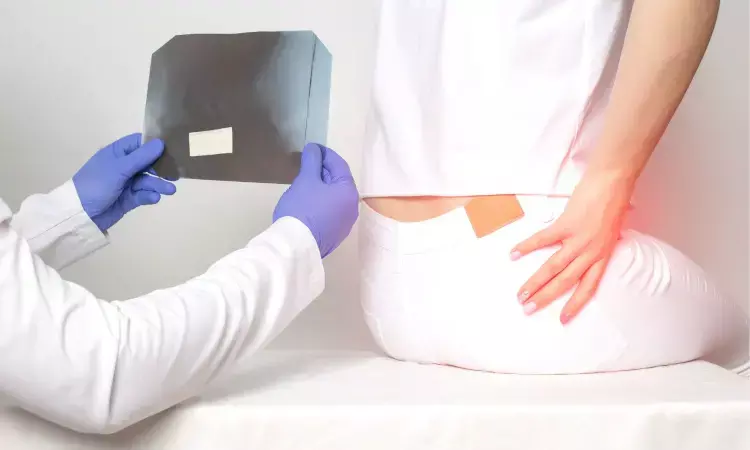- Home
- Medical news & Guidelines
- Anesthesiology
- Cardiology and CTVS
- Critical Care
- Dentistry
- Dermatology
- Diabetes and Endocrinology
- ENT
- Gastroenterology
- Medicine
- Nephrology
- Neurology
- Obstretics-Gynaecology
- Oncology
- Ophthalmology
- Orthopaedics
- Pediatrics-Neonatology
- Psychiatry
- Pulmonology
- Radiology
- Surgery
- Urology
- Laboratory Medicine
- Diet
- Nursing
- Paramedical
- Physiotherapy
- Health news
- Fact Check
- Bone Health Fact Check
- Brain Health Fact Check
- Cancer Related Fact Check
- Child Care Fact Check
- Dental and oral health fact check
- Diabetes and metabolic health fact check
- Diet and Nutrition Fact Check
- Eye and ENT Care Fact Check
- Fitness fact check
- Gut health fact check
- Heart health fact check
- Kidney health fact check
- Medical education fact check
- Men's health fact check
- Respiratory fact check
- Skin and hair care fact check
- Vaccine and Immunization fact check
- Women's health fact check
- AYUSH
- State News
- Andaman and Nicobar Islands
- Andhra Pradesh
- Arunachal Pradesh
- Assam
- Bihar
- Chandigarh
- Chattisgarh
- Dadra and Nagar Haveli
- Daman and Diu
- Delhi
- Goa
- Gujarat
- Haryana
- Himachal Pradesh
- Jammu & Kashmir
- Jharkhand
- Karnataka
- Kerala
- Ladakh
- Lakshadweep
- Madhya Pradesh
- Maharashtra
- Manipur
- Meghalaya
- Mizoram
- Nagaland
- Odisha
- Puducherry
- Punjab
- Rajasthan
- Sikkim
- Tamil Nadu
- Telangana
- Tripura
- Uttar Pradesh
- Uttrakhand
- West Bengal
- Medical Education
- Industry
CT based Deep learning model may Predict subsequent fracture risk in Hip fracture cases

Patients are at higher risk of subsequent fractures in the first few years following an initial fracture. Models to predict short-term subsequent risk have not been developed.
A deep-learning model using digital x-rays reconstructed from 3D hip CT images for predicting short-term subsequent fractures (<5 years) in patients with a recent hip fracture is promising, according to a study by a team led by Yisak Kim of Seoul National University Graduate School. This study could improve clinician care for their patients, and the findings of this Original Research on Musculoskeletal Imaging are published in Radiology.
The primary purpose of this study was to develop and validate a deep-learning prediction model using digitally reconstructed radiographs from hip CT in patients (recent hip fractures) to predict subsequent fracture risk. The study included patients who underwent three-dimensional hip CT from January 2004 to December 2020 and generated two-dimensional frontal, lateral, and axial radiographs. These were assembled to construct an ensemble model. DenseNet modules calculated risk probability based on extracted image features and output were fracture-free probability plots. C index and AUC assessed model performance and compared with other models using the paired t-test.
Key findings from the study are:
- The training and validation set had 1012 patients with a mean age of 74.5 years, including 706 females and 113 subsequent fractures.
- The test set had 468 patients of mean age, 75 years, with 335 females and 22 subsequent fractures.
- In the test set, the ensemble model had a higher C index (0.73) than other image-based models for predicting subsequent fractures (C index range, 0.59–0.70 for five of six models).
- The ensemble model achieved AUCs of 0.74, 0.74, and 0.73 at the follow-ups (2-, 3-, and 5 years), respectively. This is higher than most other image-based models at two years (AUC range, 0.57–0.71 for five of six models) and three years (AUC range, 0.55–0.72 for four of six models).
- Moreover, the ensemble model achieved higher AUCs than the clinical model [included known risk factors (AUCs of 0.58, 0.64, and 0.70, respectively in follow-up)].
Concluding further, among those with recent hip fractures, the ensemble deep learning model using digitally reconstructed radiographs from hip CT demonstrated good performance for predicting subsequent fractures in the short term.
Reference:
Kim, Y et al. A CT-based Deep Learning Model for Predicting Subsequent Fracture Risk in Patients with Hip Fracture. Radiology, 310(1).
BDS, MDS in Periodontics and Implantology
Dr. Aditi Yadav is a BDS, MDS in Periodontics and Implantology. She has a clinical experience of 5 years as a laser dental surgeon. She also has a Diploma in clinical research and pharmacovigilance and is a Certified data scientist. She is currently working as a content developer in e-health services. Dr. Yadav has a keen interest in Medical Journalism and is actively involved in Medical Research writing.
Dr Kamal Kant Kohli-MBBS, DTCD- a chest specialist with more than 30 years of practice and a flair for writing clinical articles, Dr Kamal Kant Kohli joined Medical Dialogues as a Chief Editor of Medical News. Besides writing articles, as an editor, he proofreads and verifies all the medical content published on Medical Dialogues including those coming from journals, studies,medical conferences,guidelines etc. Email: drkohli@medicaldialogues.in. Contact no. 011-43720751


